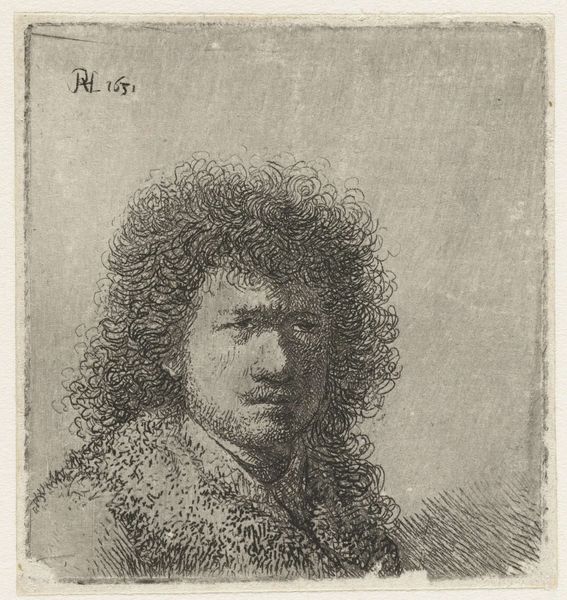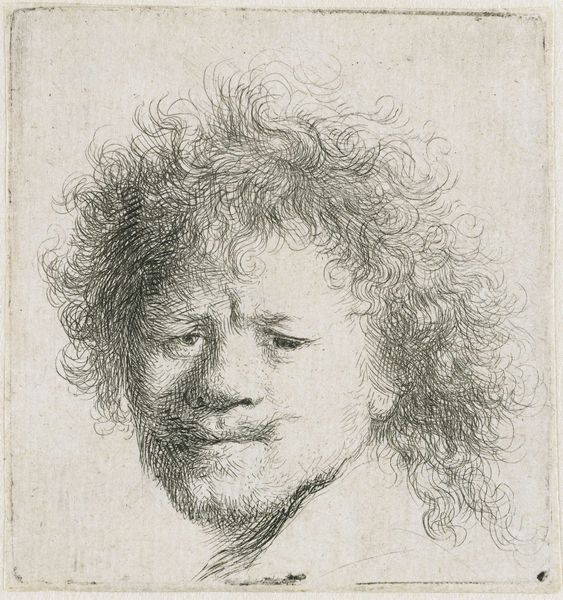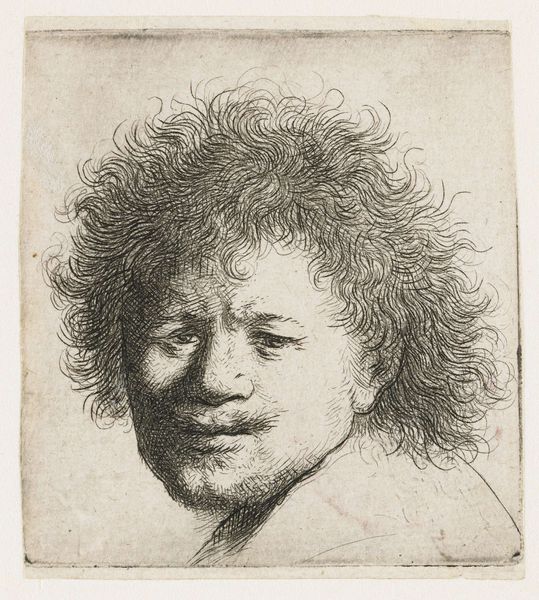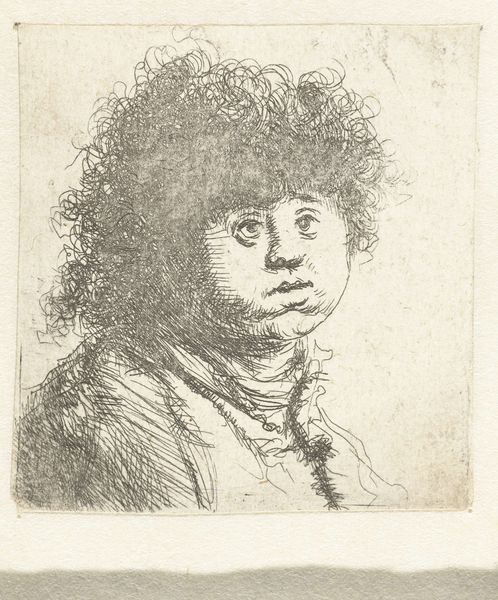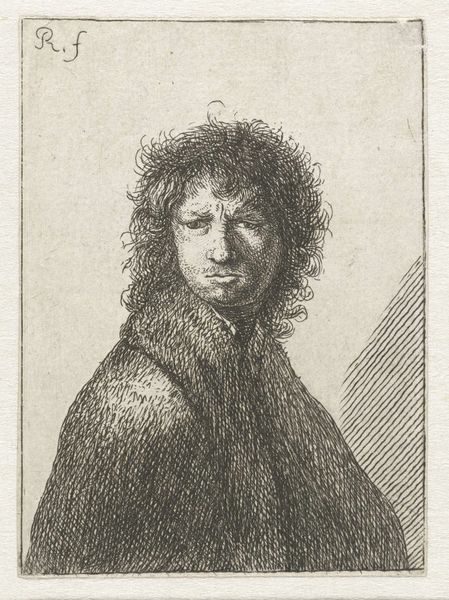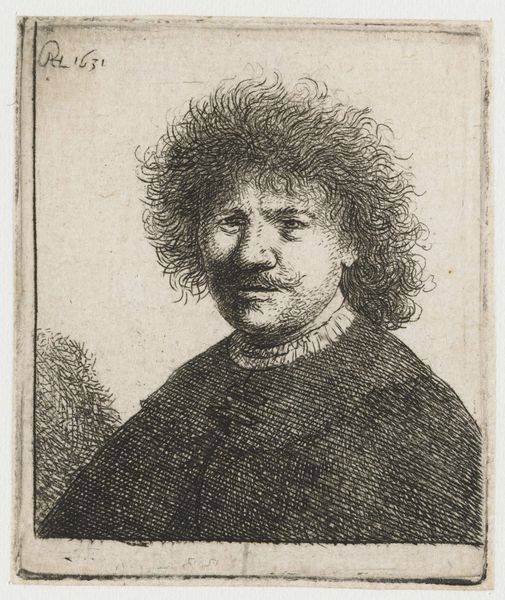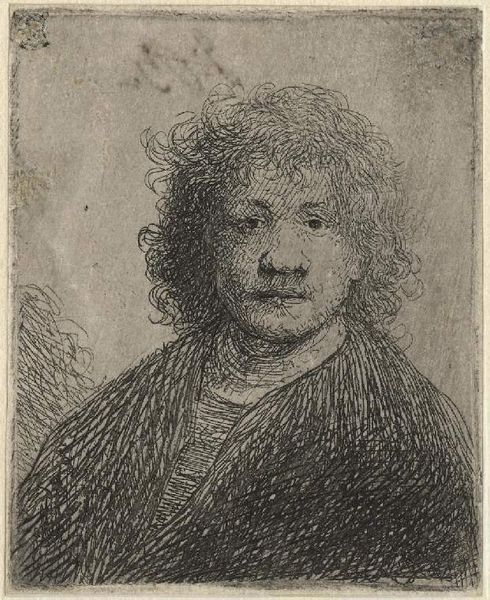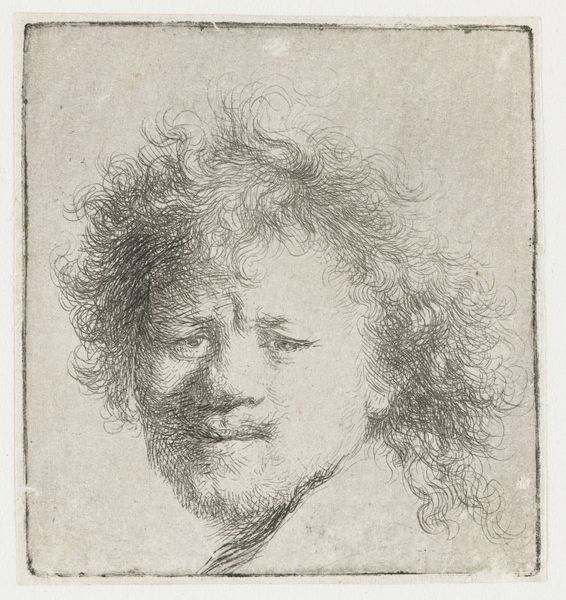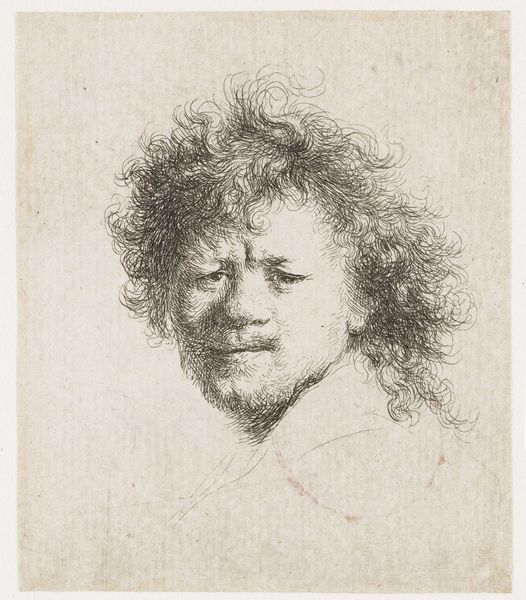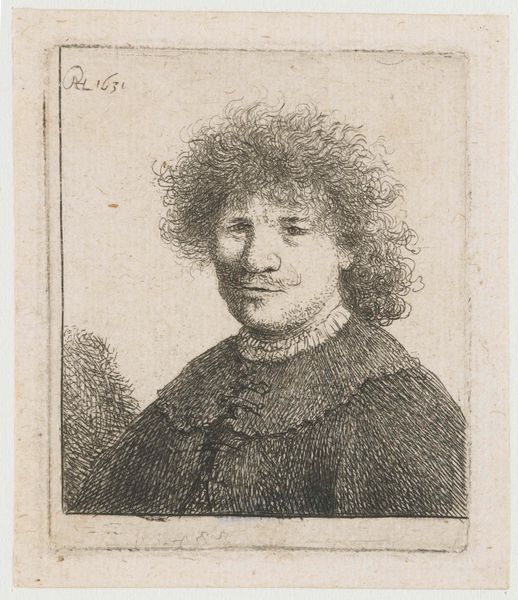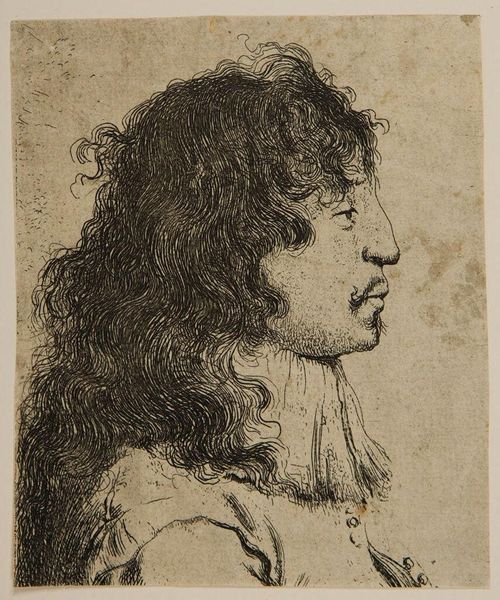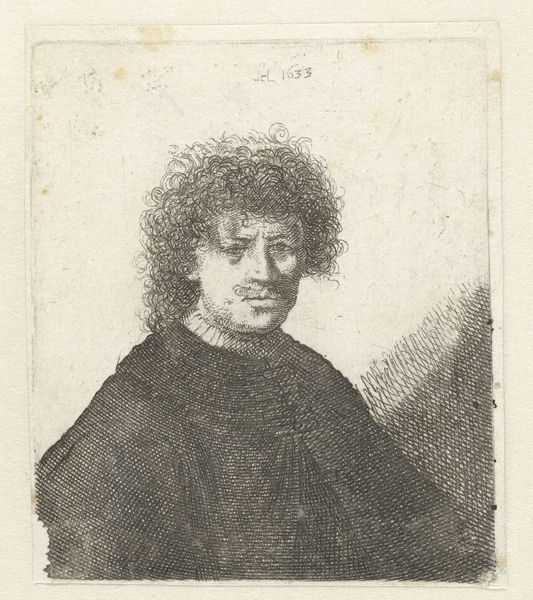
drawing, print, etching
#
portrait
#
pencil drawn
#
drawing
#
self-portrait
#
baroque
#
dutch-golden-age
# print
#
etching
#
portrait drawing
Dimensions: height 50 mm, width 43 mm
Copyright: Rijks Museum: Open Domain
This is a self-portrait etching by Rembrandt van Rijn. What does it mean for an artist to represent themselves? In the Netherlands during the 17th century, where Rembrandt lived, self-portraits offered a new way to display one's skill to potential patrons. They helped to advertise an artist's unique talent, but also demonstrated the artist’s understanding of their own place in society. Rembrandt’s expressive features and wild hair are emphasized through the technique of etching, which creates areas of light and shadow. These self-portraits were often printed in multiples, which shows a shrewd understanding of the developing art market. Understanding the social context of the artwork is crucial. Looking into sources from that time, such as letters, journals, and financial records, helps us understand the conditions that made Rembrandt’s art possible. Art is never created in a vacuum, but in the context of institutions and economics.
Comments
No comments
Be the first to comment and join the conversation on the ultimate creative platform.
